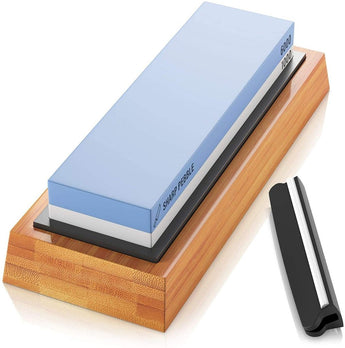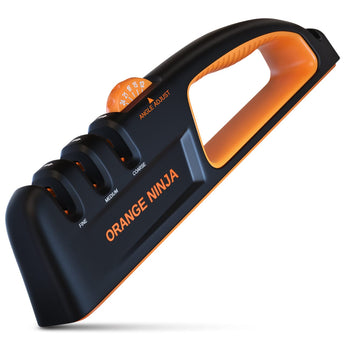
A decent knife does not come cheap. We often tend to procrastinate on maintenance. Not realizing that spending a few short minutes from time to time will quite literally double the life of your knife. Not just that, but a sharp knife makes your job in the kitchen a lot easier and safer than wrestling with a dull blade.
Sharpening a knife takes patience, skill, and a bit of finesse. At times people tend to take shortcuts such as relying on a shoddy sharpener. While it may serve you temporarily; but be warned that you may end up with a permanently damaged blade.
Within this article, we’ll discuss, what is the correct way of sharpening a knife.
Using A Whetstone:
Although there are several ways to sharpen a knife but using a sharpening stone or a whetstone is one of the most effective ways to sharpen a knife, not to mention it’s also the easiest way to learn for usual everyday knife users.
Before you start, you need to determine the extent of the damage and whether your blade needs a thorough dent removal or just needs to be sharpened.
Here are the key steps to sharpen a knife:
- Place the whetstone on a cutting board or countertop. If your blade has nicks or is quite dull then you need to start with a coarser grit stone such as 1000. It’ll remove more metal quicker thus sharpening a dull blade much quicker.
- Place a wet paper towel under the stone so it doesn’t slide out of control.
- With one hand, hold the knife firmly by the handle and position the edge of the knife against the stone, point-first, with the cutting edge meeting the stone at around a 20-22-degree angle.
- Stabilize the blade with your other hand.
- With moderate pressure, slide the blade forward and across the whetstone, covering the entire length of the blade and keeping the blade against the stone at a constant 22-degree angle.
- Do this ten times, then flip the knife over and give the other side of the blade ten strokes on the whetstone.
- Once you’re done with sharpening, it’s time for the “finishing” process. This will remove the scratches from the blade. You repeat the same process over a finer grit stone, between 4000-6000
A few precautions to keep in mind:
- Using a very steep sharpening angle can damage the blade
- Always sharpen in the same direction, whether it's front-to-back or back-to-front.
- It’s better to send ceramic knives to a professional sharpener as ceramic blades are brittle and prone to easily break if not handled with utmost care.
We’d love to hear from you! Drop us a PM on our Facebook or Instagram.



